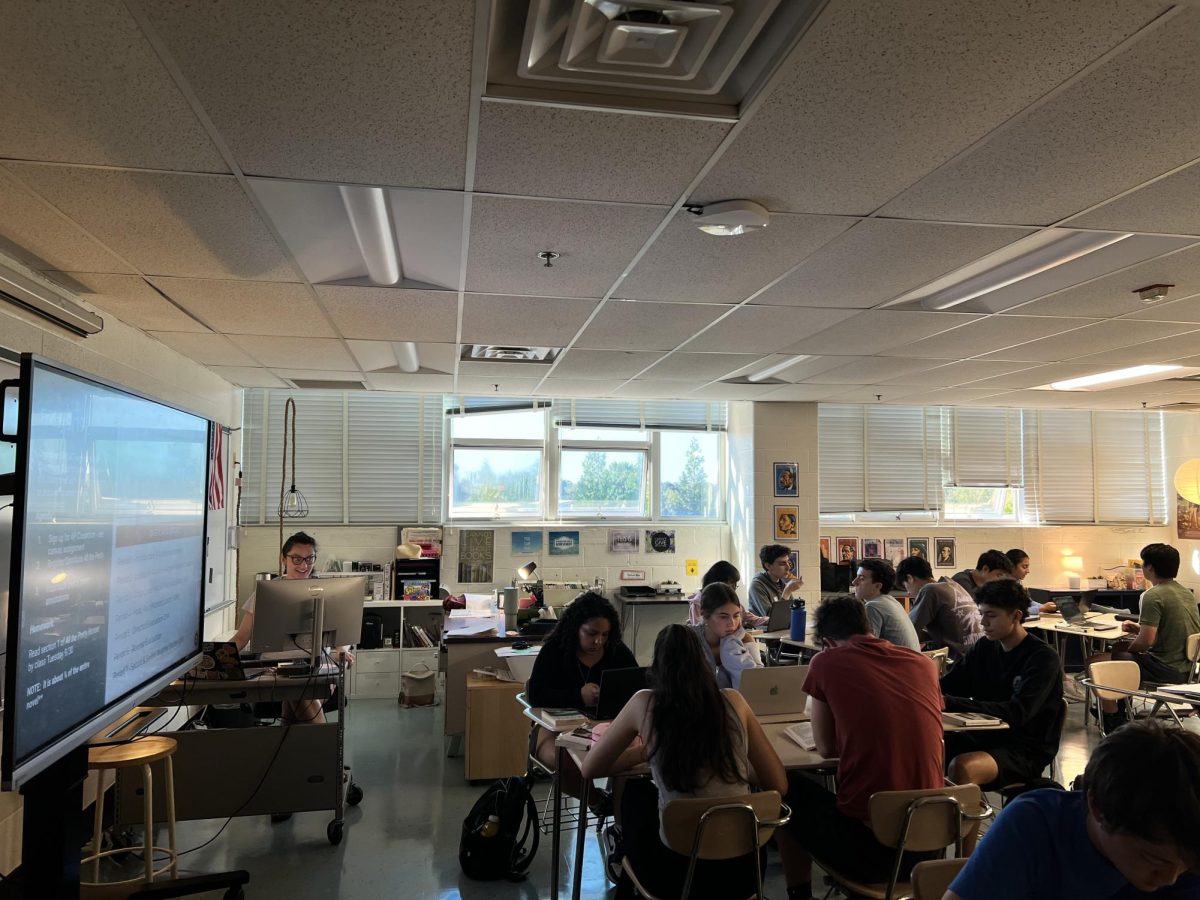As part of an MCPS efficiency initiative, WJ was one of three high schools to start replacing lights with new, brighter LED lights. Following complaints from students and staff about their brightness, steps are being taken to adjust the lighting levels as the replacement program continues.
When WJ began the process of replacing lights, complaints arose from those who teach or take classes in affected areas. Backlash against new lighting has encouraged staff to take steps toward setting it back to normal.
Teachers like Jamie Grimes have voiced concerns about bright lights causing physical discomfort.
“They were very bright, and the staff was not informed that they were being replaced,” Grimes said. “When they did the hallway outside my room, I could no longer stand in the hall to greet students, and had migraines the entire week. I stayed out of the hall, and when I did go out I wore sunglasses.”
Dimmer switches have recently been added to classrooms, which allows teachers to keep lights on the lowest possible setting. Even so, many are still uncomfortable. Grimes has endured a week of teaching with updated lighting and dimmers in his classroom.
“I can’t turn the front row of lights on since they don’t have the dimmer switch,” Grimes said. “The other three rows I keep at the lowest setting.”
From a student’s perspective, brightness has interfered with many’s ability to stay focused in class. Senior Elsa Santighian, who has two classes on the 200s floor this year, has dealt with this problem since the lights’ installation.
“They’re ugly, and they give me headaches and hurt my eyes,” Santighian said. “Bright, LED fluorescent lights are my worst nightmare. They put me to sleep because they make my head hurt.”
The lighting change was initiated by MCPS, who selected WJ as the first high school, and one of only three total schools to begin the process of updating lights around the county. School business administrator Deborah Tiecher has overseen this project for WJ, managing it logistically.
“All MCPS schools will eventually get these new lights which are much more energy efficient. Our lights were quite old, and it was hard to replace the bulbs,” Teicher said. “Ballasts were breaking, so it was time for an update.”
Although the update was necessary, many staff members felt the initiative for increased brightness was taken too far.
“Staff immediately let us know that the lighting was uncomfortable,” Teicher said. We worked with central office and got folks out right away to do some light measurements. Our complaints were heard, and a fix is forthcoming.”
After the first round of new lights were deemed too bright, additional ones were ordered and are said to be, although brighter than the old lights, an endurable brightness while still accomplishing MCPS’s goal of saving as much energy as possible. This second round of lights was installed and tested on December 11th.
The road to finding the right way to update lights in hallways and classrooms hasn’t been smooth, but everyone has worked together to find a balance of brightness. Most importantly, MCPS can use WJ’s feedback to standardize the right approach to installing new lights in other schools.
“It has been frustrating to see teachers and students struggle with very bright lights and not being able to immediately fix it,” Teicher said. “But everyone has been so understanding and really championed through what for some has been very challenging.”








